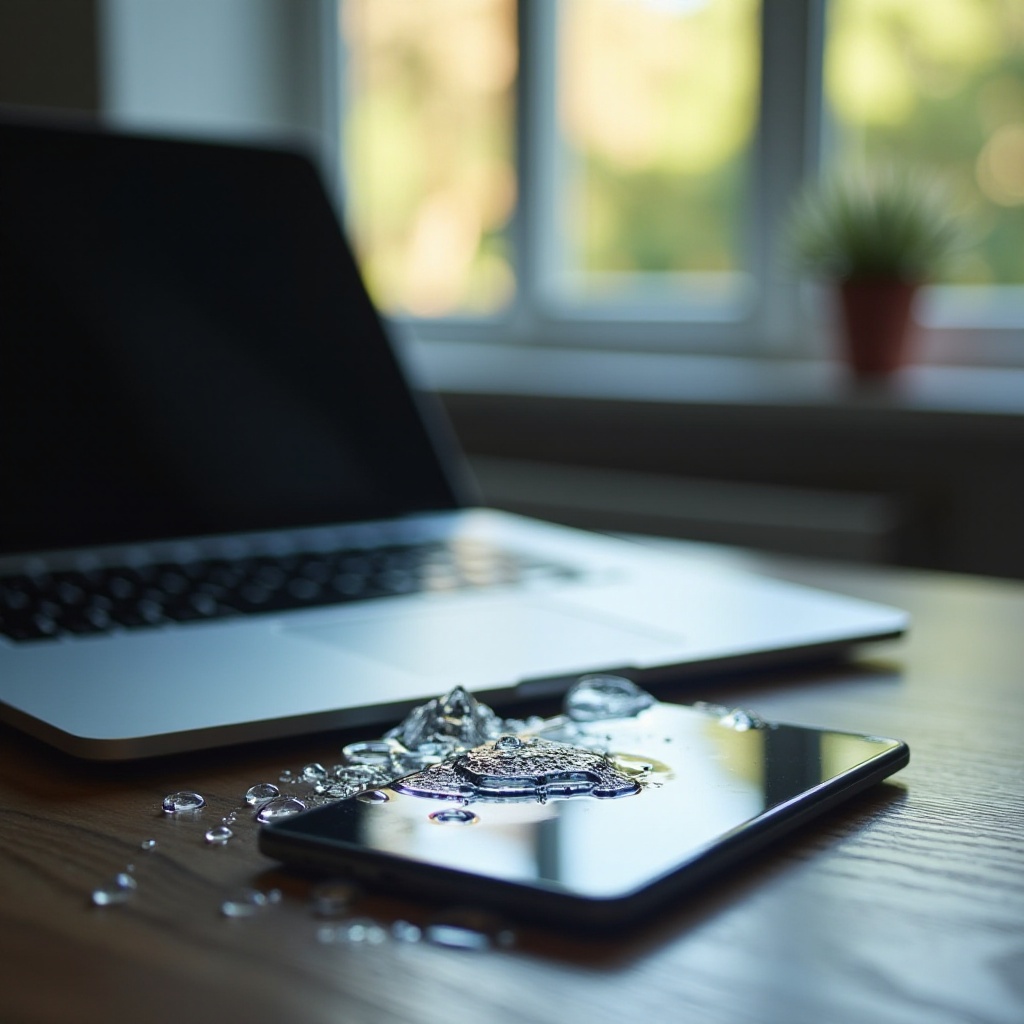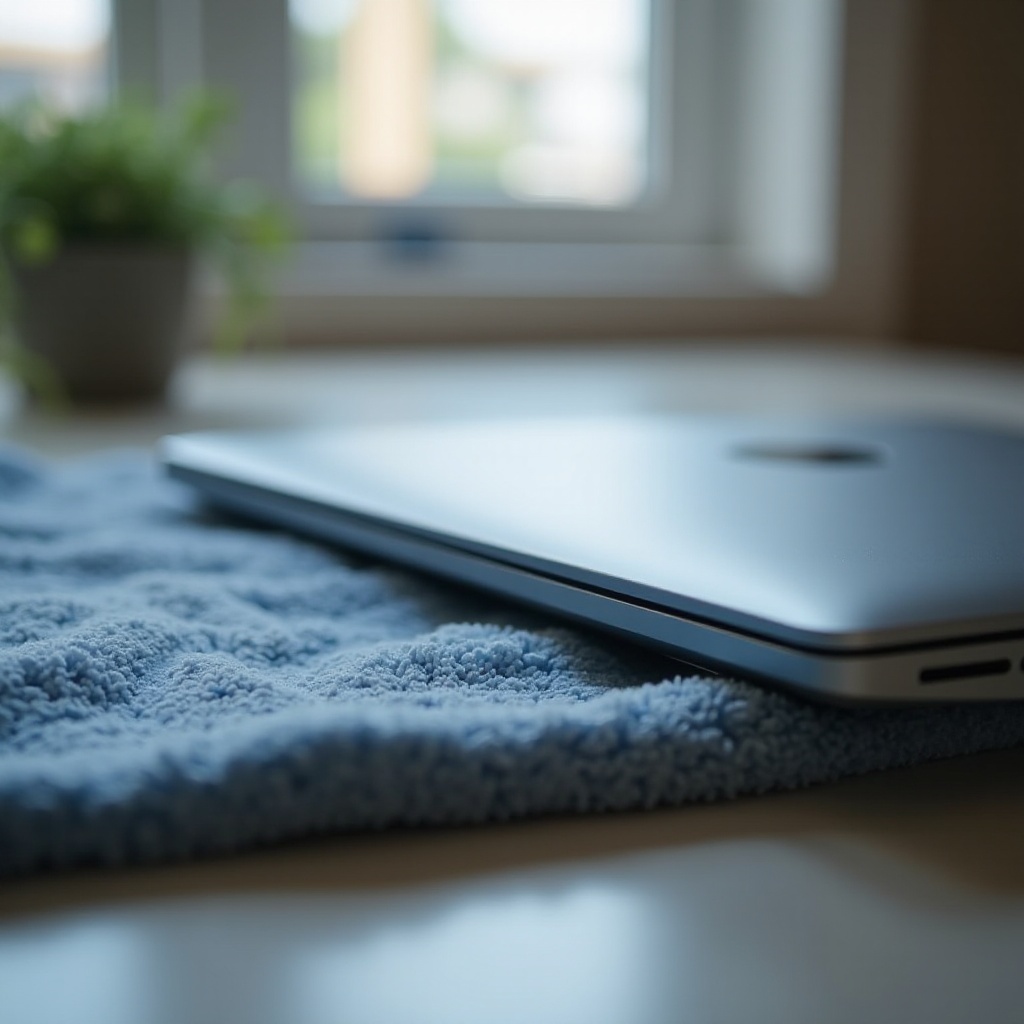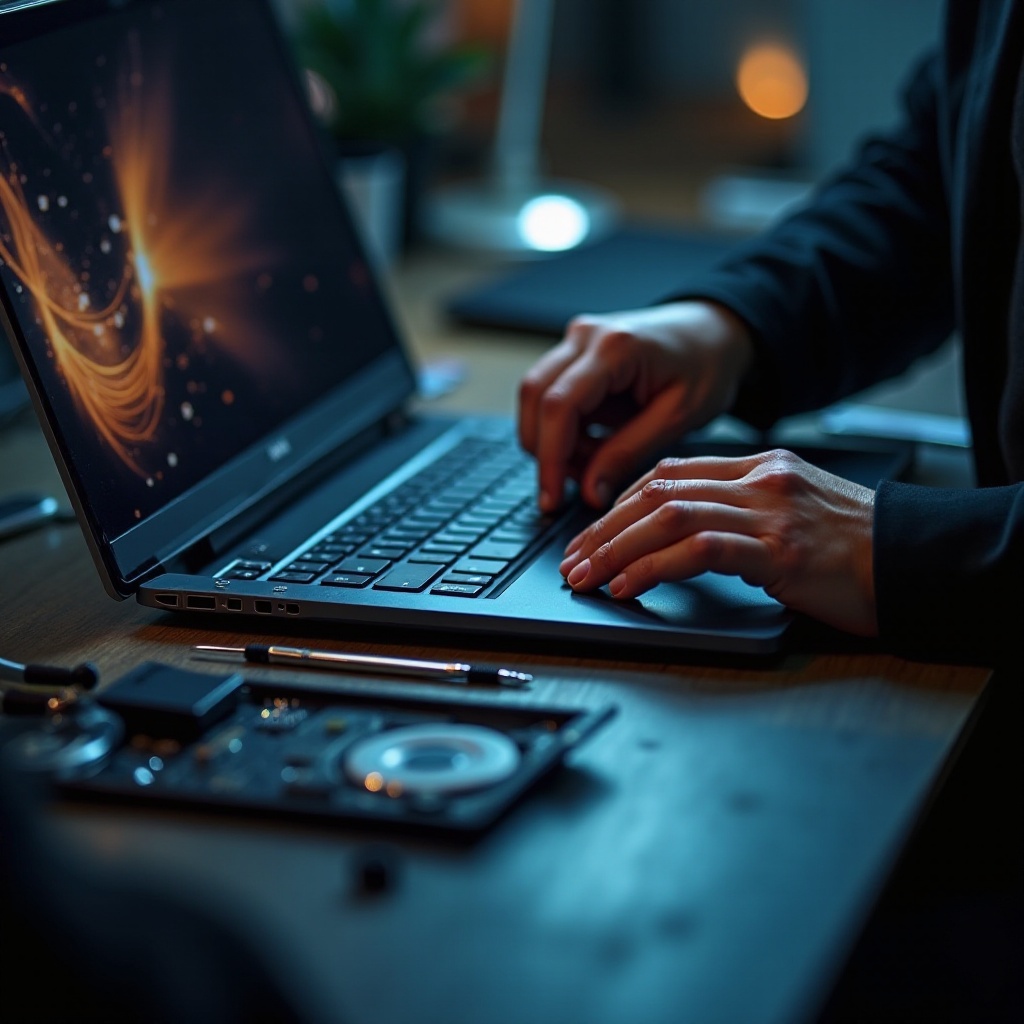Introduction
Water damage can strike fear into the hearts of laptop owners, leading to anxiety over costly repairs or permanent loss of vital information. Whether it’s a spilled drink, an unexpected rainstorm, or an accidental drop into water, understanding how to act quickly can be the difference between a damaged device and a disaster avoided. This comprehensive guide offers insights on handling water damage in laptops, delving into immediate steps, drying techniques, signs for professional help, and preventive measures to safeguard your valuable tech.

Immediate Steps After Water Exposure
When water meets technology, every second counts. Start by turning off your laptop immediately to prevent electrical short circuits. Unplugging the charger and removing any external connections like USB drives or headphones is also crucial—every disconnected element reduces potential harm.
Next, remove the battery if your device allows for it. This action minimizes the chance of electrical components frying due to water contact. Take a soft cloth or an absorbent towel and gently blot any visible liquid. Avoid rubbing aggressively, as this might spread moisture into sensitive areas.
Flipping your laptop upside down can aid in draining but ensure you do this gently. Avoid shaking or applying force. Elevate it on its side, letting gravity draw the water out naturally. Promptly following these steps can significantly improve the outcome of your laptop’s condition.
Drying Your Laptop Properly
After immediate actions, the drying process is critical in preventing long-term damage. Proper drying involves both exterior and interior care.
External Drying Techniques
Initially focus on the outer components. Use a dry microfiber cloth to absorb visible moisture on the exterior. Avoid paper towels, which can leave behind fibers.
Internal Drying Tips
For the internal parts, gentle airflow over open compartments is essential. Canned air can be effective, but use it sparingly and avoid pushing liquid further inside. Alternatively, place a desk fan on a low setting to increase air circulation.
Common Mistakes to Avoid
Avoid using heat sources like hairdryers, as heat can warp and damage components. While the rice trick might work for smaller electronics, in laptops, rice can get stuck in crevices and cause issues.

When to Seek Professional Help
Understanding when to call a professional can save your device. If your laptop doesn’t respond or behaves oddly post-drying, consulting an expert is wise. Warning signs include strange noises, screen glitches, or persistent power issues, indicating potential severe damage that necessitates professional care. Experts have tools to diagnose and fix complex problems, possibly saving you from replacing the entire laptop.
DIY Repair: A Step-by-Step Guide
For those confident in their technical repair skills, attempting a DIY fix can be an option. Proceed with caution.
Tools You’ll Need
- Screwdrivers (specific to your laptop)
- Isopropyl alcohol (90% or higher)
- Microfiber cloths
- Anti-static mat or wristband
Step-by-Step Process
- Disassemble: Carefully remove the back panel to access internal components, keeping track of screw positions.
- Clean and Dry: Use isopropyl alcohol to clean any corroded or wet areas. Its fast evaporation helps minimize damage risk.
- Inspect Components: Check for any corrosion or residue. Remove and individually dry RAM and storage drives.
- Reassemble with Caution: Once everything is completely dry and clean, carefully reassemble, ensuring secure connections and correctly inserted screws.
Risks and Considerations
Attempting repairs without adequate knowledge can exacerbate problems. Lost screws, broken locks, or wrong reassembly might lead to irreversible damage. If uncertain, opt for professional assistance.

Preventing Future Water Damage
Prevention is the best cure. Implementing precautionary measures can avert future water damage incidents.
Safe Habits
Maintain a safe distance between beverages and electronics. Make it a practice to close your laptop during breaks to protect it from unforeseen spills.
Protective Gear
Invest in a waterproof laptop sleeve or case for protection against spills. Keyboard covers add an extra layer of defense against splashes.
Emergency Preparedness
Keep a lint-free cloth and a basic toolkit nearby for rapid spill response. Having a plan in place reduces panic during emergencies.
Conclusion
Addressing water damage in laptops requires quick action, meticulous drying, and assessing damage severity. While some situations allow for DIY repairs, professional help is sometimes crucial for preserving data and device functionality. Embracing good habits and investing in protective gear can prevent future incidents, keeping your laptop safe and operational.
Frequently Asked Questions
Can a water-damaged laptop be fully repaired?
Yes, if acted upon swiftly, many water-damaged laptops can be repaired. However, the success rate heavily depends on the severity and duration of the exposure.
How long should I leave my laptop to dry before turning it on?
Ideally, wait at least 48 hours after initial drying efforts. Longer waits are encouraged for severe exposures, ensuring all moisture evaporates.
Is it safe to use a hairdryer or rice to dry my laptop?
Avoid using a hairdryer, as heat can damage components. Rice is not advised for laptops due to gaps where rice can lodge and cause issues. Use a dry fan or air compressor for better results.